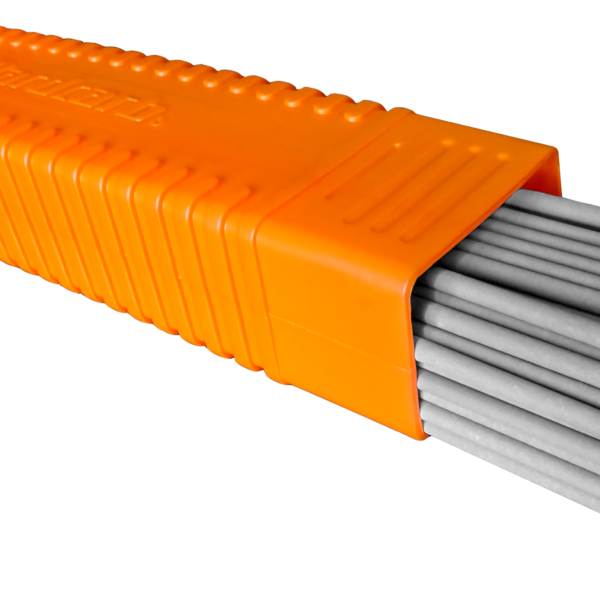Nicrolloy 233

A special graphite coated electrode that provides a fully machinable nickel alloy deposit suitable for cold welding on grey cast iron, malleable cast iron, and cast steel as well as repair welding on castings showing symptoms of fatigue. Good refining action provides maximum resistance to cracking and freedom from porosity. Sound welds can be produced even with oil impregnated and contaminated surfaces. Excellent welding properties also for welding with low amperage and well suited for welding on DC- and AC.
Weld deposit characteristics:
The weld metal produces austenitic nickel with finely distributed graphite; the solid wire deposits almost pure nickel refined with Ti. The easily controllable flow permits spatter-free welding in all positions with minimal amperage.
This electrode excels by very high crack-resistance and high tensile strength of the weld metal. It produces quietly and intensely flowing weld metal with very little spattering and easily removable slag. The weld seam is file-soft and machinable even in the transitional zone between the seam and the base material. The resistance to hardening of diluted weld metal can be useful for buttering prior to filling with more economic NiFe consumables.
Recommended uses and applications
» suitable for joining most cast irons, including SG, meehanite, malleable, alloy as well as grey.
» for repair and fabrication of cast iron housings, blocks, machinery, parts, frames, casting defects, casting flaws, machine cuts, machining errors, repair of cracks, rebuilding worn and damaged areas.
» for repairing aged, eroded or very thin sections of cast iron.
» thick-to-thin cast iron section joining.
» for dissimilar joining cast irons to steel.
Additional info
Anti-wear suitability
| Metal-to-Metal friction Metal surfaces in relative motion forced into contact with or without lubricant. Degradation by the formation of micro-welds between the contacting surfaces. | - |
| High pressure abrasion Wear by relative movement under pressure of mineral particles of suitable hardness, shape and texture to remove material from the metal surface, leaving superficial deformation. | - |
| Cavitation Tearing out of grains from the metal surface by the formation and implosion of bubbles in a liquid in rapid motion. | - |
| Mechanical fatigue Fatigue and formation of cracks in surface regions due to tribological stress cycles that result in the separation of material. | - |
| Thermal fatigue Cyclic exposure to high temperatures leading to permanent deformation by alternate expansion and contraction. Alteration of the structure and properties of the material. | - |
| Hot oxidation Creation of a poorly adhering oxide layer that reforms constantly. Degradation by loss of material thickness. | - |
Workability
| Work hardening Work hardening is the process of making a metal harder and stronger through plastic deformation. When a metal is plastically deformed, dislocations move and additional dislocations are generated. | |
| Edge retention Suitability for creating sharp edges and retaining them during operation. | |
| Machining Machinability is the ease with which a metal can be cut (machined) permitting the removal of the material with a satisfactory finish at low cost. | Highly suitable. |
Mechanical properties
| Yield strength | > 200 Mpa |
| Tensile strength | > 400 Mpa |
| Elongation A5 | > 8% |
| Impact strength | - |